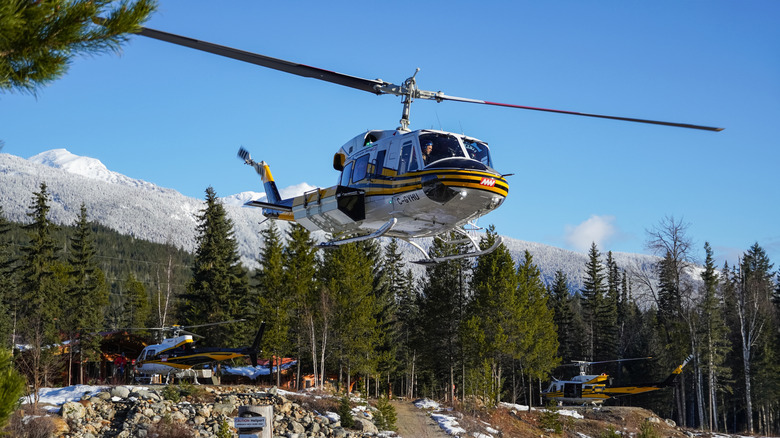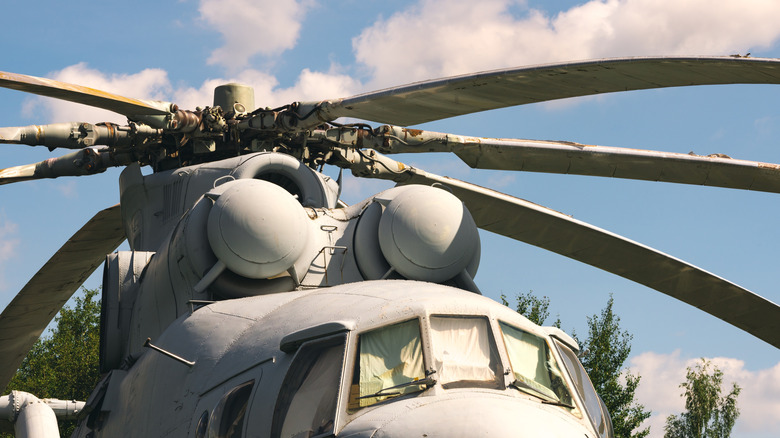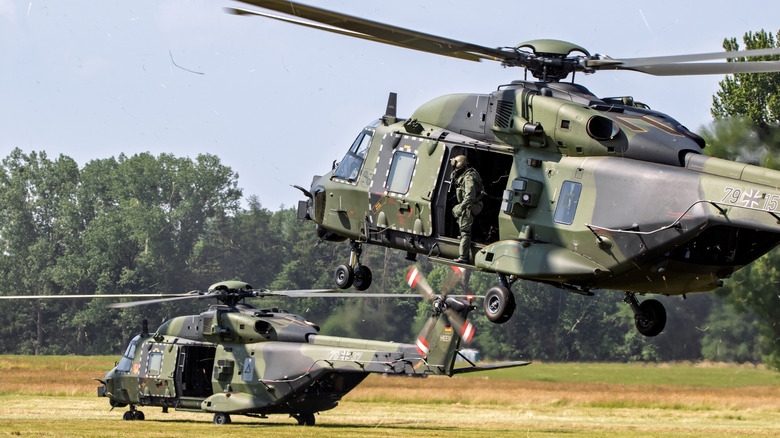Why Do Helicopters Make That Iconic Thumping Sound When They're Flying?
Helicopters have one of the most recognizable sounds in aviation. The signature "whop whop" or deep thumping sound announces its arrival long before it appears in the sky. It's a sound so iconic, it's been used extensively on Hollywood big screens around the world, most notably in war movies. But what makes that sound?
Unlike airplanes and other fixed-wing aircraft, which need air to pass over and under the wings to produce lift, helicopters have blades that rotate at high speeds to create lift and thrust. Because of this fundamental difference, helicopters generate different aerodynamic forces and their unique sound, especially at the tips of the spinning rotors.
There are a few aerodynamic phenomena that come together to create that rhythmic sound. One primary cause that stands out is a concept specific to rotorcraft aerodynamics called blade vortex interaction, or BVI. This is the main reason why helicopters sound the way they do, and why some models, like the iconic Huey military transport, are even louder than others.
Blade vortex interaction is the main culprit
The primary reason why helicopters make that sound is BVI. As the rotor blades rotate and cut through the air, each blade leaves swirling pockets of low-pressure air behind it. This is known as tip vortices: When the blade behind hits the wake left by the blade in front, it receives a sharp, sudden change in aerodynamic forces. That abrupt loading and unloading make waves of pressure that travel through the air as sound, producing the low frequency that people can hear from miles away.
Rotorcraft studies indicate the problem is more pronounced when a helicopter is flying forward. As the blades move in the same direction of flight, they pass through vortices at higher speeds. At the same time, retreating blades can suffer from retreating blade stall, when the airflow can't keep up, causing a turbulent shudder. Together, these properties give helicopters their unmistakable sound.
In older military helicopters like the Bell UH-1 Huey, the effect is even more pronounced due to a straightforward, semi-rigid two-blade rotor system. This setup creates fewer, but much stronger vortices at the blade tips, resulting in larger aerodynamic disturbances because only two blades share the load. Each blade produces more turbulence and a deeper, slower pulse that became the haunting soundtrack of the Vietnam War.
Engineers are working to quiet things down
Despite the distinguishable sound a helicopter makes, manufacturers have been trying to reduce the noise for decades. Modern rotorcraft have adopted four or more blade systems to reduce BVI by dispersing aerodynamic forces more evenly. Adding more blades reduces the strength of each vortex. Swept or tapered-tipped blades are also being used to minimize direct vortex hits and shockwave formation.
Advances in composite rotor blades allow them to flex and can also dampen sudden vortex interactions. Some systems use what's called active control, meaning the blades actively adjust multiple times per second, avoiding the worst of BVI. Helicopter Pilots do their part to help by modifying flight paths and speeds, keeping helicopters away from areas where BVI is more likely, referred to as "avoidance zones."
For countless aviation enthusiasts, the classic thumping sound a helicopter makes is part of the charm. The Huey's rotor slap is so famous, it's even been recreated in video games. It's an audible symbol and has a special place in aviation history. As the aviation world advances, newer rotorcraft may be a lot quieter as they fly through the sky, but for now, let's marvel at the fascinating aerodynamics at play overhead.


